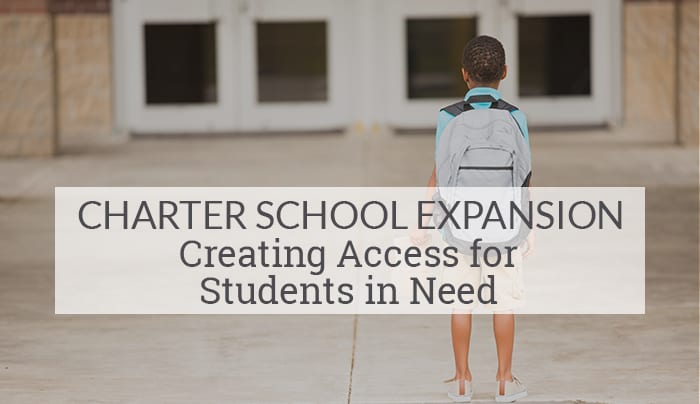
Editor’s Note: This post was originally published here by the Fordham Institute on May 3, 2018. It was written by Amy Ruck Kagan, National Association of Charter School Authorizers’ (NACSA) Vice President of Authorizer Engagement and Advancement. The article addresses the need for charter school expansion in areas where high-need students don’t have access to elementary charter schools. Kagan challenges authorizers to review the data showing where elementary charter schools are – and are not – in relationship to high-poverty areas. She asserts that if authorizers use this data to rethink their state policy, authorizing environment, and community needs, more underserved children would have the opportunity for equal access to great public school options.
Read the complete article below.
Charter school deserts or opportunities for access?
At NACSA, I lead a team that works directly with hundreds of charter school authorizers across the country. I interact with many of them on a day-to-day basis, and they’re all driven by a commitment to ensure that every child has access to quality schools, regardless of zip codes. They know that great charter schools can transform children’s lives and that too many neighborhoods are void of quality educational opportunities.
Doing the work thoughtfully and meeting this critical demand requires the right tools and supporting data. Our research finds that the best authorizers are obsessed with data: They actively and intentionally seek out new information about their schools and communities, and they incorporate it into their decisionmaking when it’s appropriate. When this information is accessible, authorizers have the power to do something about the charter deserts within their communities.
One piece of this data puzzle might be a new report from the Thomas B. Fordham Institute, Charter School Deserts: High-Poverty Neighborhoods with Limited Educational Options. It seeks to help authorizers and those in the charter sector answer the question: What high-need areas in my city or state lack elementary charter schools?
Even if we added just one charter school in each desert, we’re talking about opening up great schools for up to 150,000 more kids.
The report maps the location of elementary charter schools against high-poverty areas using data from the U.S. Census Bureau. Alarmingly, it found that almost all states with a charter school law have at least one desert. More specifically, it found that there are roughly 500 neighborhoods across the country with a high concentration of families in need and no charter schools. The potential impact is huge: Even if we added just one charter school in each desert, we’re talking about opening up great schools for up to 150,000 more kids.
That’s why authorizers should take a moment to review this report and reflect upon their own state policy, authorizing environment, and community needs. Then ask: “What can I do to make sure that every child served within the boundaries of my portfolio have equal access to a great public school option?”
This isn’t an easy question. There are many factors that hinder growth within a portfolio—and many are out of an authorizer’s control, such as a lack of facilities, law and regulations, and other political obstacles. But I am a firm believer that there is a solution to every problem, and that authorizers are the solution-oriented and passionate professionals that can indeed create much-needed change.
Here are some ideas for how authorizers can start using these data to create access for kids:
- Share this report with decisionmakers within your organization and determine the right strategy for using the data to help communities in need.
- Use this report in conjunction with expansion and renewal decisions with high-performing schools to create seats where they are most needed.
- Evaluate how the data included in this report and other information can be used as part of the application decisionmaking process.
- Truly examine and address the geographic discrepancies within your own portfolio of schools.
- Opening more great schools that serve the students who need them most is one of the greatest challenges—and greatest opportunities—facing authorizers today. Authorizers have the power and the responsibility to help change lives. Using this report as a tool in their toolbox will only help provide more great schools for kids.
The views expressed herein represent the opinions of the author and not necessarily the Thomas B. Fordham Institute.
Since the company’s inception in 2007, Charter School Capital has been committed to the success of charter schools. We provide growth capital and facilities financing to charter schools nationwide. Our depth of experience working with charter school leaders and our knowledge of how to address charter school financial and operational needs have allowed us to provide over $1.6 billion in support of 600 charter schools that educate 800,000 students across the country. For more information on how we can support your charter school, contact us. We’d love to work with you!